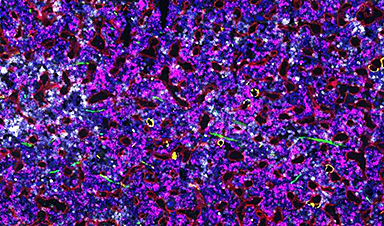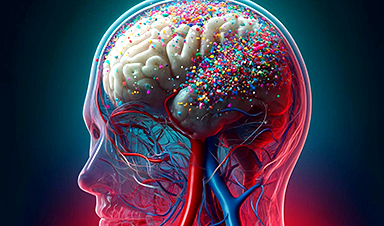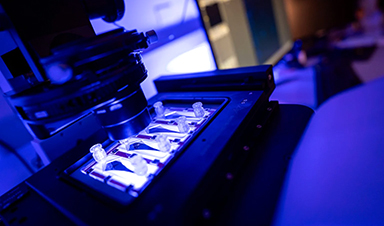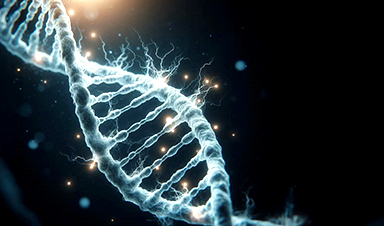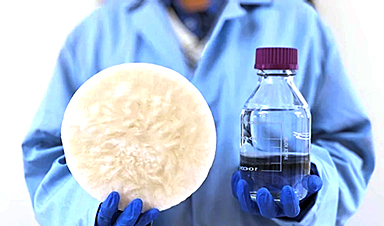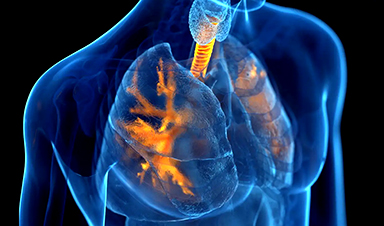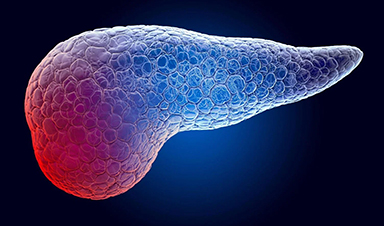Engineers at Duke University have developed a device that uses sound waves to separate and sort the tiniest particles found in blood in a matter of minutes. The technology is based on a concept called “virtual pillars” and could be a boon to both scientific research and medical applications.
The results appeared online November 23 in the journal Science Advances.
“These nanoparticles have significant potential in medical diagnosis and treatment, but the current technologies for separating and sorting them take several hours or days, are inconsistent, produce low yield or purity, suffer from contamination and sometimes damage the nanoparticles,” said Tony Jun Huang, the William Bevan Distinguished Professor of Mechanical Engineering and Materials Science at Duke.
“We want to make extracting and sorting high-quality sEVs as simple as pushing a button and getting the desired samples faster than it takes to take a shower,” Huang said.
Recent research indicates that sEVs are comprised of several subgroups with distinct sizes (e.g., smaller than 50 nanometers, between 60 and 80 nanometers, and between 90 and 150 nanometers). Each size is believed to have different biological properties.
The recent discovery of sEV subpopulations has excited researchers because of their potential to revolutionize the field of non-invasive diagnostics, such as the early detection of cancer and Alzheimer’s disease. But the particles haven’t found their way into clinical settings yet.
Huang said this is largely due to the difficulties associated with separating and isolating these nano-sized sEV subpopulations. To meet this challenge, Huang, his doctoral student Jinxin Zhang, and collaborators at UCLA, Harvard, and Magee-Womens Research Institute, developed the ANSWER platform.
The device uses a single pair of transducers to generate a standing sound wave that envelops a narrow, enclosed channel filled with fluid. The sound wave “leaks” into the liquid center through the channel walls and interacts with the original standing sound wave. With careful design of the wall thickness, channel size and sound frequency, this interaction creates a resonance that forms “virtual pillars” along the center of the channel.
“The ANSWER EV fractionation technology is the most advanced capability for precise EV fractionation, and it will significantly impact the horizon of EV diagnostics, prognostics and liquid biopsy,” said David Wong, director for UCLA Center for Oral/Head & Neck Oncology Research.
In the new paper, the researchers demonstrate that their ANSWER platform can successfully sort sEVs into three subgroups with 96% accuracy for nanoparticles on the larger end of the spectrum and 80% accuracy for the smallest. They also show flexibility in their system, adjusting the number of groupings and ranges of sizes with simple updates to the sound wave parameters. Each of the experiments only took 10 minutes to complete, whereas other methods such as ultra-centrifugation can take several hours or days.
“Due to its contact-free nature, ANSWER offers a biocompatible approach for the separation of biological nanoparticles.” Zhang said. “Unlike mechanical filtration methods, which have fixed separation cutoff diameters, ANSWER offers a tunable approach to nanoscale separation, and the cutoff diameter can be precisely modified by varying the input acoustic power.”
Moving forward, the researchers will continue improving the ANSWER technology so that it can be efficient in purifying other biologically relevant nanoparticles such as viruses, antibodies and proteins.
News
Beneficial genetic changes observed in regular blood donors
Researchers at the Francis Crick Institute have identified genetic changes in blood stem cells from frequent blood donors that support the production of new, non-cancerous cells. Understanding the differences in the mutations that accumulate [...]
Shocking Amounts of Microplastics in the Brain – It Could Be Increasing Our Risk of Dementia
The brain has higher concentrations of plastic particles compared to other organs, with increased levels found in dementia patients. In a comprehensive commentary published in Brain Medicine, researchers highlight alarming new evidence of microplastic accumulation [...]
Baffling Scientists for Centuries: New Study Unravels Mystery of Static Electricity
ISTA physicists demonstrate that contact electrification depends on the contact history of materials. For centuries, static electricity has intrigued and perplexed scientists. Now, researchers from the Waitukaitis group at the Institute of Science and [...]
Tumor “Stickiness” – Scientists Develop Potential New Way To Predict Cancer’s Spread
UC San Diego researchers have developed a device that predicts breast cancer aggressiveness by measuring tumor cell adhesion. Weakly adherent cells indicate a higher risk of metastasis, especially in early-stage DCIS. This innovation could [...]
Scientists Just Watched Atoms Move for the First Time Using AI
Scientists have developed a groundbreaking AI-driven technique that reveals the hidden movements of nanoparticles, essential in materials science, pharmaceuticals, and electronics. By integrating artificial intelligence with electron microscopy, researchers can now visualize atomic-level changes that were [...]
Scientists Sound Alarm: “Safe” Antibiotic Has Led to an Almost Untreatable Superbug
A recent study reveals that an antibiotic used for liver disease patients may increase their risk of contracting a dangerous superbug. An international team of researchers has discovered that rifaximin, a commonly prescribed antibiotic [...]
Scientists Discover Natural Compound That Stops Cancer Progression
A discovery led by OHSU was made possible by years of study conducted by University of Portland undergraduates. Scientists have discovered a natural compound that can halt a key process involved in the progression [...]
Scientists Just Discovered an RNA That Repairs DNA Damage – And It’s a Game-Changer
Our DNA is constantly under threat — from cell division errors to external factors like sunlight and smoking. Fortunately, cells have intricate repair mechanisms to counteract this damage. Scientists have uncovered a surprising role played by [...]
What Scientists Just Discovered About COVID-19’s Hidden Death Toll
COVID-19 didn’t just claim lives directly—it reshaped mortality patterns worldwide. A major international study found that life expectancy plummeted across most of the 24 analyzed countries, with additional deaths from cardiovascular disease, substance abuse, and mental [...]
Self-Propelled Nanoparticles Improve Immunotherapy for Non-Invasive Bladder Cancer
A study led by Pohang University of Science and Technology (POSTECH) and the Institute for Bioengineering of Catalonia (IBEC) in South Korea details the creation of urea-powered nanomotors that enhance immunotherapy for bladder cancer. The nanomotors [...]
Scientists Develop New System That Produces Drinking Water From Thin Air
UT Austin researchers have developed a biodegradable, biomass-based hydrogel that efficiently extracts drinkable water from the air, offering a scalable, sustainable solution for water access in off-grid communities, emergency relief, and agriculture. Discarded food [...]
AI Unveils Hidden Nanoparticles – A Breakthrough in Early Disease Detection
Deep Nanometry (DNM) is an innovative technique combining high-speed optical detection with AI-driven noise reduction, allowing researchers to find rare nanoparticles like extracellular vesicles (EVs). Since EVs play a role in disease detection, DNM [...]
Inhalable nanoparticles could help treat chronic lung disease
Nanoparticles designed to release antibiotics deep inside the lungs reduced inflammation and improved lung function in mice with symptoms of chronic obstructive pulmonary disease By Grace Wade Delivering medication to the lungs with inhalable nanoparticles [...]
New MRI Study Uncovers Hidden Lung Abnormalities in Children With Long COVID
Long COVID is more than just lingering symptoms—it may have a hidden biological basis that standard medical tests fail to detect. A groundbreaking study using advanced MRI technology has uncovered significant lung abnormalities in [...]
AI Struggles with Abstract Thought: Study Reveals GPT-4’s Limits
While GPT-4 performs well in structured reasoning tasks, a new study shows that its ability to adapt to variations is weak—suggesting AI still lacks true abstract understanding and flexibility in decision-making. Artificial Intelligence (AI), [...]
Turning Off Nerve Signals: Scientists Develop Promising New Pancreatic Cancer Treatment
Pancreatic cancer reprograms nerve cells to fuel its growth, but blocking these connections can shrink tumors and boost treatment effectiveness. Pancreatic cancer is closely linked to the nervous system, according to researchers from the [...]

